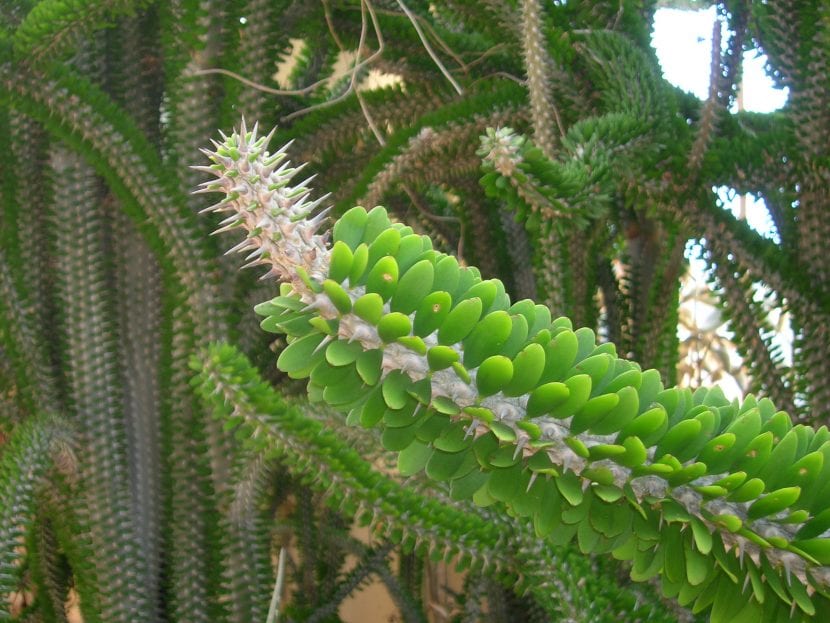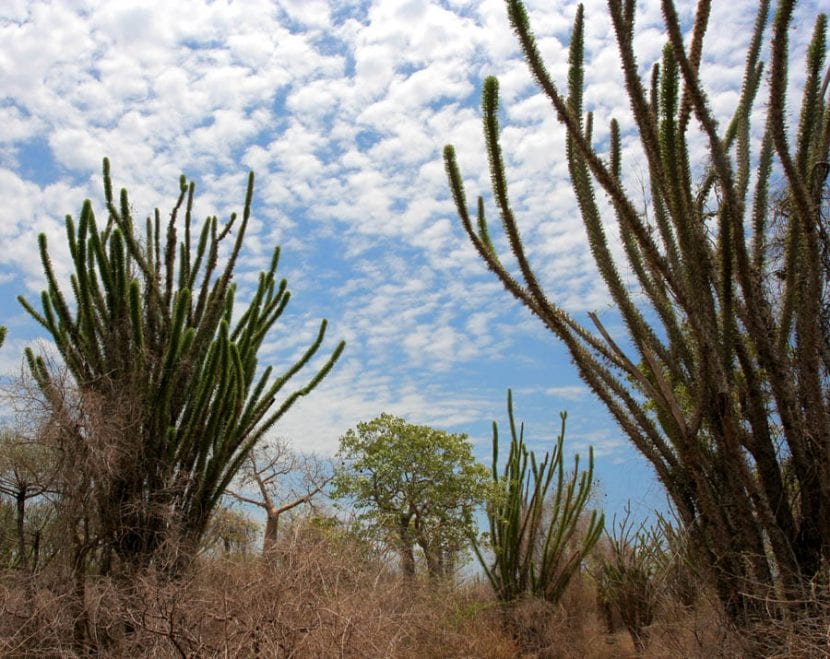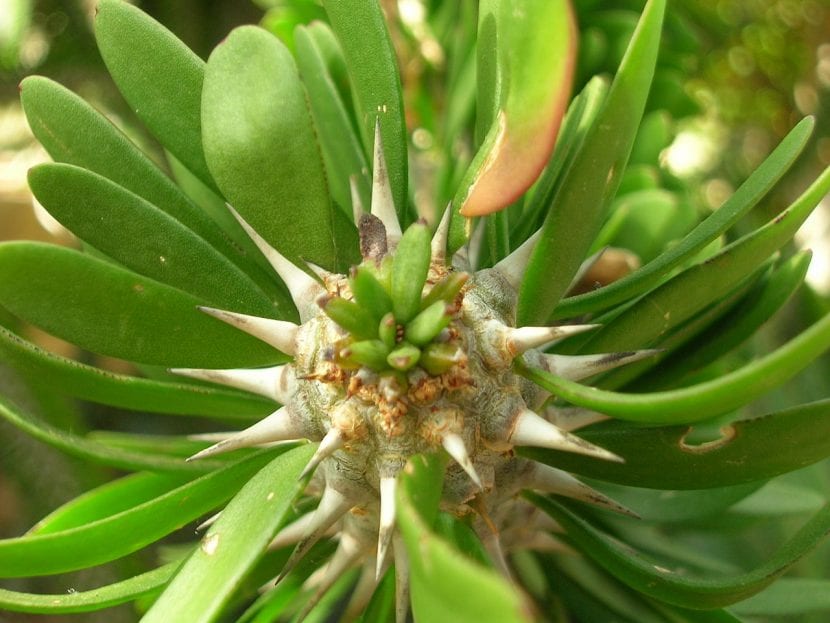
La alluaudia It is one of the most curious plants found in Madagascar: its stems are covered by thorns almost a centimeter long and, although at first it may seem otherwise, they are the kind that cause damage. But also, it has leaves, small, but it has.
In its natural habitat, it forms truly spectacular thorn forests. Y when it is grown it is ... wonderful.
Characteristics of the Alluaudia

The name »Alluaudia» refers to the botanical genus of our protagonist. It is composed of six species, which are the A. ascendens, A. comosa, A. dumosa, A. humbertii, A. montagnacii, and the a.procera, which is the easiest to find. It grows as a thorny and succulent shrub or tree reaching a height of 2 to 20 meters. Many of the species eventually form a trunk, such as the A. ascendens or the A.dumosa.
It is a deciduous plant which is shed from the leaves during the dry season or, if grown in temperate climates, in winter. These are small, 0.5 by 3.5cm long and light green in color. The flowers are small, and are grouped in large umbels.
What care do you need?

If you like rare plants and Alluaudia has caught your attention, this is your care guide:
- Location: outside, in full sun. It can be indoors as long as it is placed in a room where a lot of light comes in from outside.
- Soil or substrate: it is very important that it has good drainage. If you have it in a pot, you can simply use pumice, and if it is on the ground you can make a 50cm x 50cm hole, place a shading mesh covering the sides, and mix the soil with perlite in equal parts.
- Irrigation: two or three times a week in summer, and once a week the rest of the year. In winter, do not water.
- Subscriber: During spring and summer, it should be paid with a fertilizer for cacti and succulents following the manufacturer's instructions.
- Planting or transplanting time: in spring.
- Multiplication: by seeds and cuttings in spring-summer.
- Rusticity: it supports well the cold of up to -2ºC, but it needs protection against hail.
What do you think?